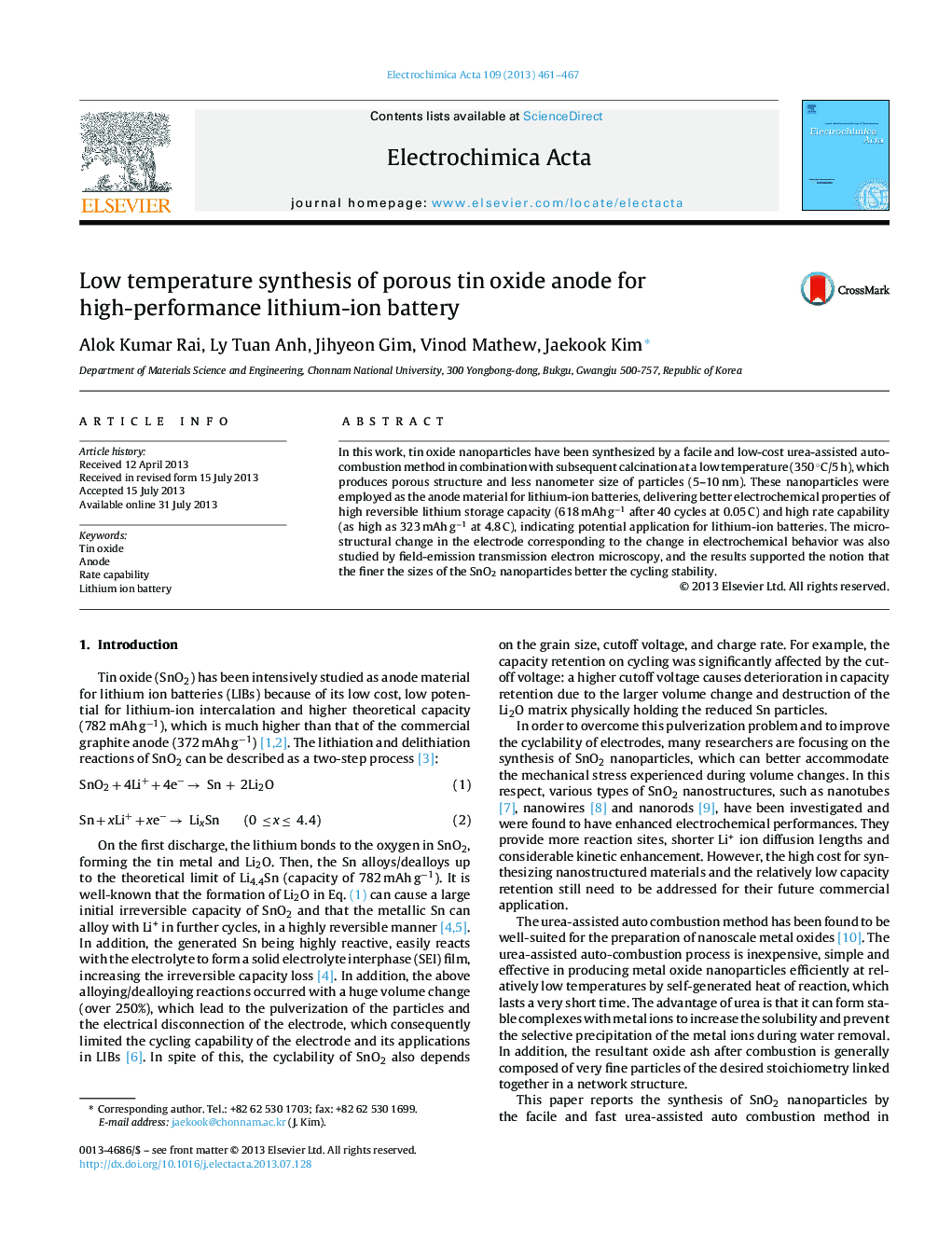| Article ID | Journal | Published Year | Pages | File Type |
|---|---|---|---|---|
| 6616299 | Electrochimica Acta | 2013 | 7 Pages |
Abstract
In this work, tin oxide nanoparticles have been synthesized by a facile and low-cost urea-assisted auto-combustion method in combination with subsequent calcination at a low temperature (350 °C/5 h), which produces porous structure and less nanometer size of particles (5-10 nm). These nanoparticles were employed as the anode material for lithium-ion batteries, delivering better electrochemical properties of high reversible lithium storage capacity (618 mAh gâ1 after 40 cycles at 0.05 C) and high rate capability (as high as 323 mAh gâ1 at 4.8 C), indicating potential application for lithium-ion batteries. The microstructural change in the electrode corresponding to the change in electrochemical behavior was also studied by field-emission transmission electron microscopy, and the results supported the notion that the finer the sizes of the SnO2 nanoparticles better the cycling stability.
Related Topics
Physical Sciences and Engineering
Chemical Engineering
Chemical Engineering (General)
Authors
Alok Kumar Rai, Ly Tuan Anh, Jihyeon Gim, Vinod Mathew, Jaekook Kim,
